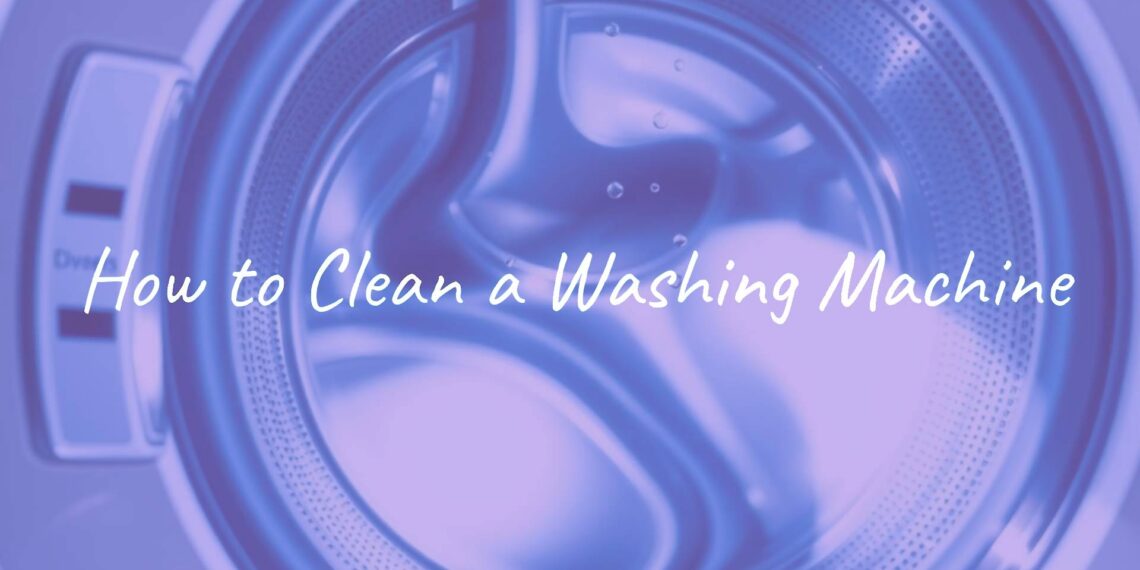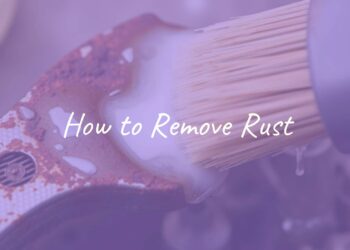Have you ever noticed your freshly washed laundry doesn’t smell as clean as you’d like, or your once-bright whites start looking dull? The reason could be simpler than you think-your washing machine may need cleaning. It sounds odd, but even a machine made to clean clothes needs cleaning itself. In this guide, you’ll learn exactly how to clean your washing machine, which will help your clothes come out clean and keep your machine running well for longer.
Keeping your washing machine clean isn’t just about how it looks. Regular cleaning stops bad smells and helps your machine last longer. Even though it uses water and soap, things like leftover detergent, softener residue, mineral deposits from hard water, grime, and even mold can build up inside. These can affect how well your washing machine cleans and even make your laundry smell off.

Why Clean Your Washing Machine?
You might think your washing machine stays clean because it handles water and soap every day. Unfortunately, that’s not the case. The warm, damp, and dark parts of your washing machine can let bacteria, mold, and mildew grow. Soap scum, dirt, and minerals from hard water add to the buildup, making a perfect place for unpleasant smells and germs.
Cleaning your washing machine often is important for several reasons:
- Your clothes will come out cleaner and fresher.
- Your machine will work better and use less energy.
- It helps prevent breakdowns, saving money on repairs or a new machine.
What Problems Can a Dirty Washing Machine Cause?
If you don’t clean your washing machine, you might start to notice:
- Musty or sour smells-even after washing and drying clothes
- Visible residue inside the drum or on your clothes
- Soap scum, mold, or mildew, especially in detergent drawers and rubber seals (gasket)
- Slow draining or clogs caused by a buildup of debris
- Clothes that don’t get as clean as they should
Ignoring these problems can lead to bigger issues and costly repairs down the line.
How to Know If Your Washing Machine Needs Cleaning
Your washing machine will often give you some hints when it’s time to clean it. You might notice:
- A bad smell in the machine or on your laundry
- Residue or detergent buildup in the dispenser
- Sludge, lint, or even mold around the rubber door seal (for front-loaders)
- Your clothes coming out less clean than before, or with strange spots
- Slow drainage from the machine

How Often Should You Clean Your Washing Machine?
How frequently you should clean your washing machine depends on a few things, like what type you own, how often you use it, and even your local weather. Most manufacturers say every six months is enough, but some situations-like living in a humid area or washing extra-dirty clothes often-mean you need to clean it more.
There are two levels of cleaning:
- Routine cleaning: Quick tasks such as wiping down the drum and gasket, and leaving the door open. Do these once a month or even after every wash.
- Deep cleaning: Cleaning internal parts and running special cleaning cycles. Do this every 3-6 months.
Cleaning Frequency Guide
| Washer Type | Deep Cleaning Frequency |
|---|---|
| Top-loading | Every 6 months |
| Front-loading/HE | Every 1-3 months |
Clean the outside, detergent dispenser, and visible areas at least once a month.
What Affects How Often to Clean?
The following can mean you should clean your washer more often:
- Front-loading and HE models-they use less water, leaving more residue
- Washing very dirty loads or lots of laundry regularly
- Living in a hot or humid climate
- Using a lot of detergent or softener
Supplies You’ll Need
Gather all your supplies before you start. You don’t need anything fancy-most items are everyday household cleaning tools or supplies.
| Cleaning Agent | Purpose |
|---|---|
| White vinegar | Removes odors, breaks up minerals and soap buildup |
| Baking soda | Deodorizes, gently scrubs away dirt |
| Bleach | Kills germs, mold, and heavy residue |
| Hydrogen peroxide | Good alternative to bleach; for stains and germs |
| Borax/washing powder | Helps break down grime, softens water |
| Commercial cleaning tablets (e.g., Affresh) | Specially made for washing machines |
Other helpful tools:
- Microfiber cloths for wiping and drying
- Old toothbrush for scrubbing small parts and corners
- Spray bottle for diluted cleaning solutions
- Gloves (especially when using bleach)
- Basin or bucket for soaking parts

Popular Cleaning Solutions: Pros and Cons
Several cleaning methods work for washing machines, each with upsides and downsides. Here’s a quick comparison:
| Solution | Pros | Cons |
|---|---|---|
| Vinegar & Baking Soda | Natural, cheap, good for odor and light buildup | Not as strong as bleach for heavy mold/germs |
| Bleach | Great for disinfecting and tough mold | Can damage some parts & fabrics, harsh to handle |
| Hydrogen Peroxide | Milder than bleach, good for general cleaning | Not as strong as bleach for bad cases |
| Borax + Washing Powder | Good at removing grease/odors, safe for most machines | Needs extra rinse to avoid residue |
| Cleaning Tablets | Very easy to use, designed for washers | More expensive, may not remove grime in every spot |
What’s Best for Different Problems?
- Bad smells: White vinegar or baking soda work well.
- Mold and mildew: Bleach is most effective, but vinegar and peroxide also help. Use in separate cycles and never mix bleach with other cleaners.
- Detergent or hard water buildup: Vinegar and commercial tablets do a great job breaking them down.
How to Clean a Front-Loading Washing Machine-Step by Step
Front-loaders save water but are more likely to get smelly due to leftover moisture in the gasket. Here’s how to get yours clean:
- Remove Laundry: Take everything out and check for anything left behind-coins, hair ties, or debris.
- Clean the Door Gasket (Rubber Seal):
- Wipe all around and inside the folds with a damp cloth and vinegar (or bleach solution-never mixed).
- Use a toothbrush for stubborn spots or mold, and wear gloves.
- Dry it carefully when finished.
- Clean the Detergent Dispenser:
- Remove it if possible and soak in hot, soapy water. Scrub all corners and rinse well.
- If it can’t be removed, pour cleaning solution inside and scrub what you can.
- Clean the Filter:
- Usually, this is at the bottom front. Place a towel and bowl underneath before opening.
- Take out the filter, clean off debris, and rinse under running water. Put it back securely.
- Deep Clean the Drum:
- Put a cleaning tablet or 2 cups of vinegar directly in the drum.
- Run the hottest, longest cycle (“tub clean” if available).
- Add baking soda to the detergent dispenser if you want extra deodorizing.
- Wipe and Dry: After the cycle, wipe all inside surfaces and leave the door open to dry completely.

How to Clean a Top-Loading Washing Machine
Top-loaders are less likely to develop mold in gaskets, but still collect dirt and odors. Here’s how to clean them:
- Empty the Drum: Be sure nothing’s left inside, then give it a quick wipe down.
- Clean the Lint Filter:
- Find and remove the lint filter (use the manual if needed).
- Rinse off debris; scrub with vinegar if needed.
- Disinfect the Drum:
- Fill with hot water and add 4 cups of bleach. Let it soak for 1 hr, then run the full cycle.
- Or use 3-4 cups vinegar instead of bleach. Let soak, agitate, then add 1/2 cup baking soda. Finish the cycle.
- Or use a tablet, following instructions.
- Scrub the Agitator and Rim: Use a cloth or toothbrush dampened with cleaning solution to clean all surfaces, especially around and under the agitator.
- Clean the Detergent Dispenser: Remove and soak if you can, scrub away any buildup, rinse, and dry.
- Run an Extra Rinse: Finish with another full, hot water cycle-no clothes or cleaning solutions-to flush away any residue.
- Wipe and Air Dry: Wipe all inside surfaces and leave the lid open to dry.
Other Parts to Keep Clean
- Detergent Dispenser: Soak removable trays in hot, soapy water. Scrub corners with a brush. If it’s not removable, pour solution in and scrub with a toothbrush.
- Filters: Remove any lint or debris caught in there and rinse under water. Check the manual if you’re unsure how to remove the filter.
- Machine Exterior: Wipe down the outside with a damp cloth and gentle cleaner. Focus on the top, sides, buttons, and doors to remove dirt and lint.
How to Prevent Mold and Odors
Mold and mildew love dark, damp places, so stopping moisture from building up inside your washer is the best way to avoid smells and problems.
- Always leave the door or lid open when not in use. This helps everything dry fully.
- Wipe the door seal (for front-loaders) and inside after each wash.
- Avoid using too much detergent. Too much leaves sticky residue that feeds mold.
- Skip fabric softener if you can. It leaves a waxy buildup.
- Take clothes out of the washer as soon as possible after washing.
- Make sure items are dry before tossing them in the hamper.
- Run a cleaning cycle (with vinegar, bleach, or a cleaning tablet) once a month.

Routine Tips for a Clean Washer
- Dry the drum, gasket, and dispenser with a cloth after each wash.
- Leave the door or lid open between washes for air flow.
- Use the right amount of detergent-never more than recommended.
- Wipe spills or drips immediately from the outside and controls.
FAQ
Should I use bleach or vinegar?
Both work, but they’re for slightly different things. Use bleach for killing germs and heavy mold, and vinegar for smells and soap scum. Never mix bleach and vinegar-they’re dangerous together. Use them in separate cycles if you want both effects.
How do you fix a stinky washer?
Scrub seals and dispensers with vinegar or bleach solution, then run a hot cleaning cycle with vinegar or a cleaning tablet. Leave the door open afterwards so everything dries.
Will cleaning tablets work?
Yes, tablets work well for breaking down hidden grime and odors. Just follow the package directions. You may still need to wipe down areas like the seal and dispenser by hand.
What shouldn’t I do when cleaning my machine?
- Never mix bleach with vinegar (or other acids) when cleaning.
- Don’t use abrasive cleaners or pads which can scratch surfaces.
- Don’t use too much detergent-follow your manual’s guide.
- Always unplug before reaching inside or removing parts.
- Check your manual before cleaning tricky parts.
















![What to with Scrap Metal? [infographic]?](https://facts-homes.com/wp-content/uploads/2019/07/645413-POPYOV-391-120x86.jpg)





